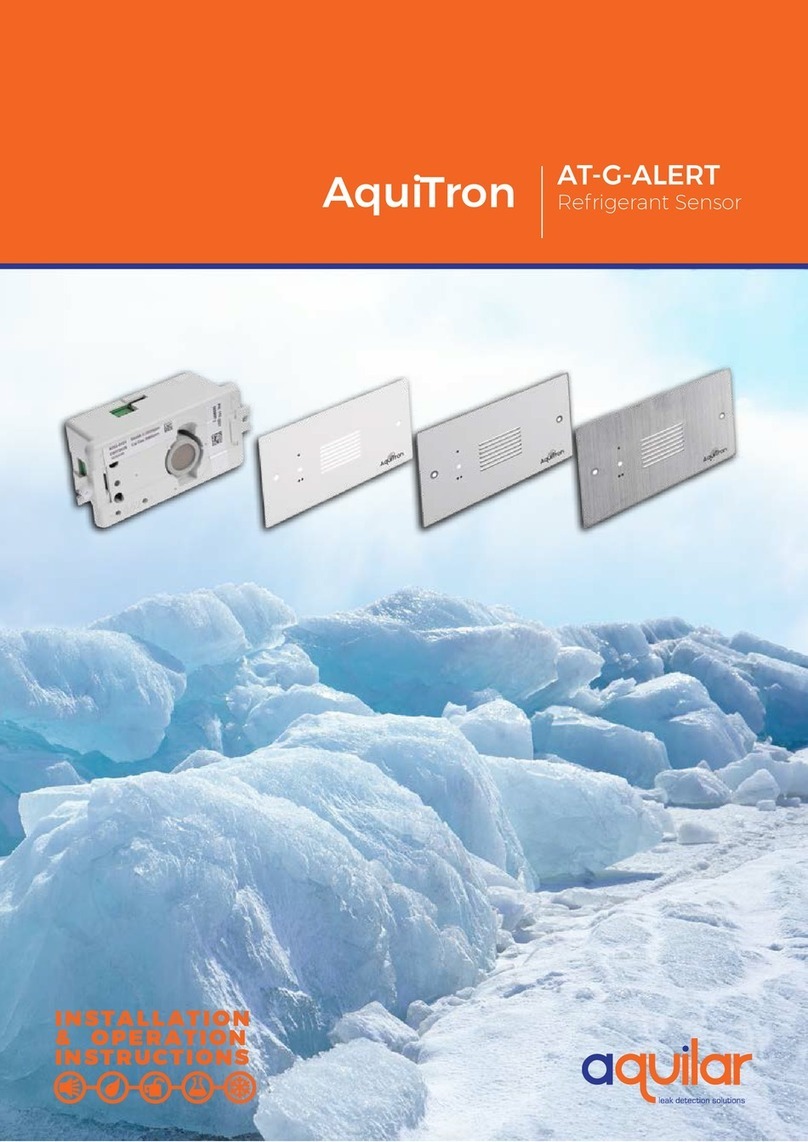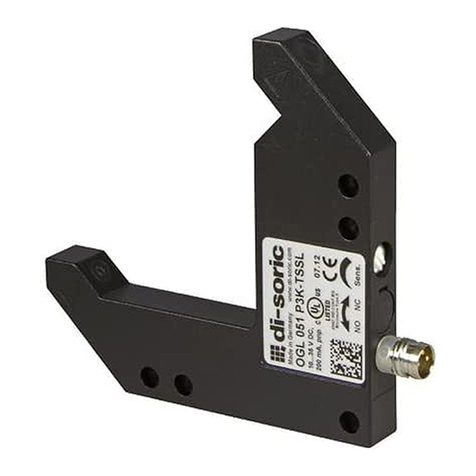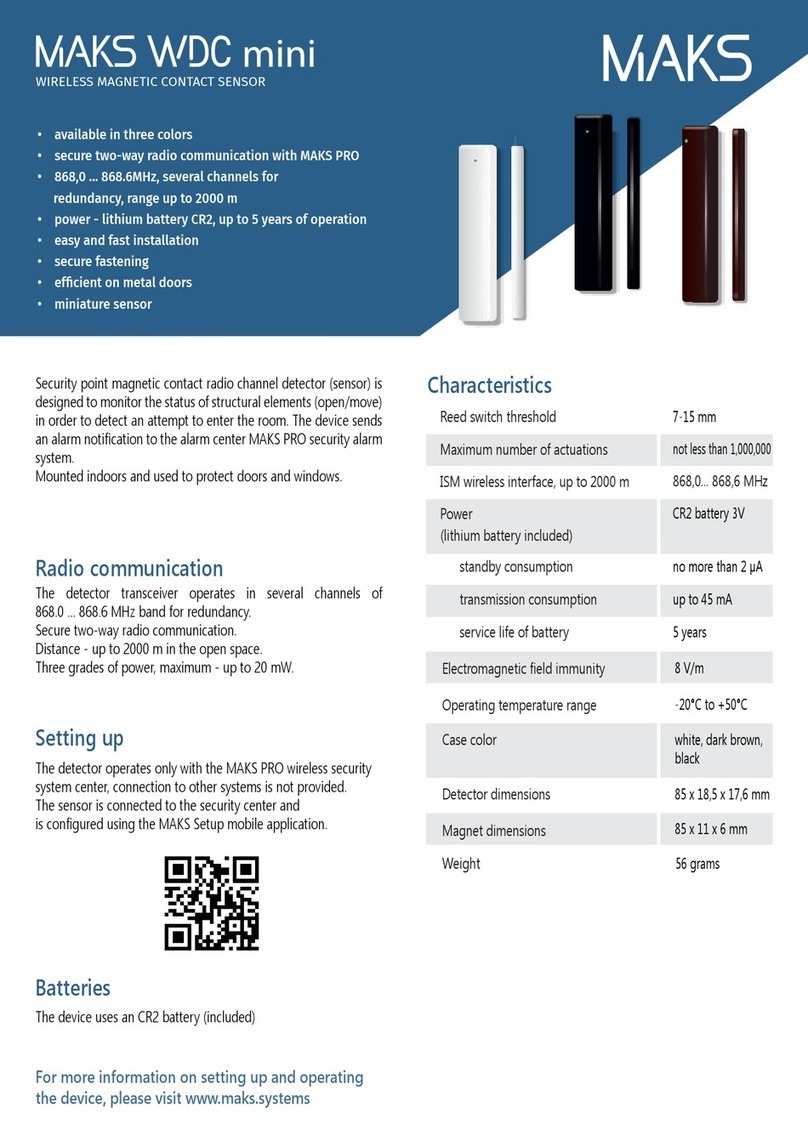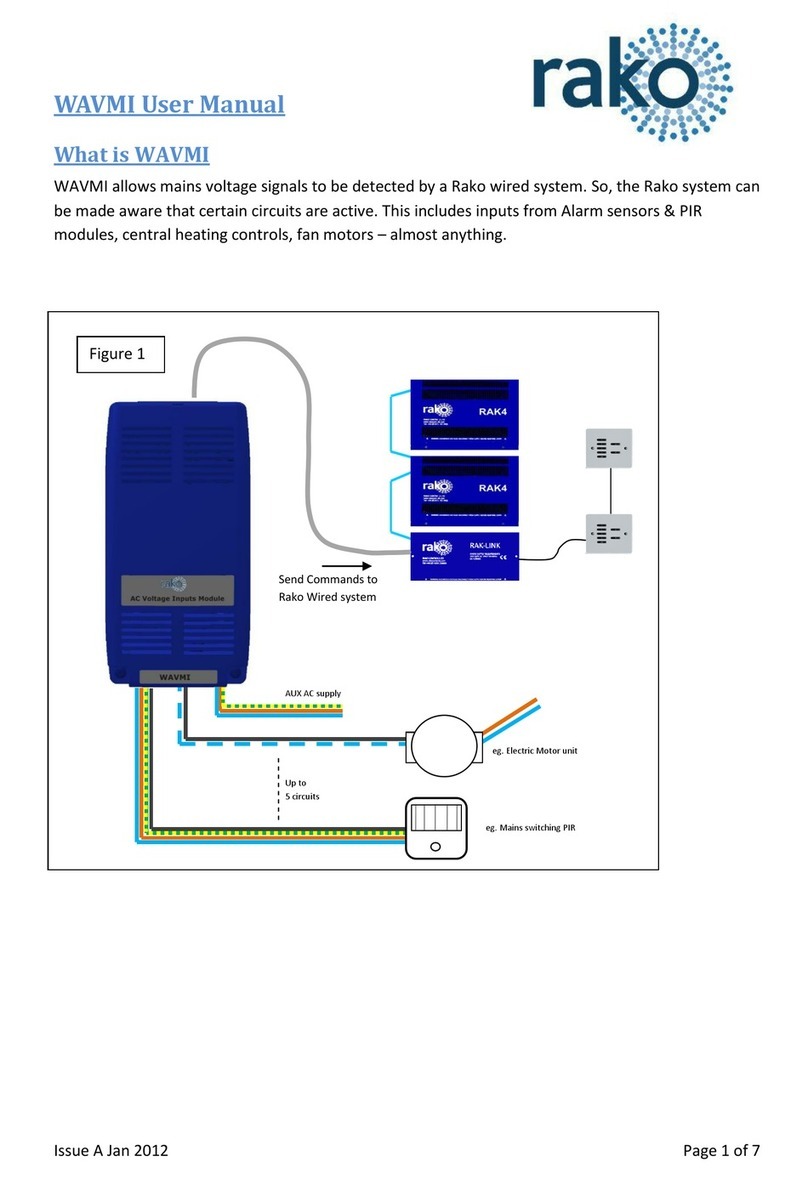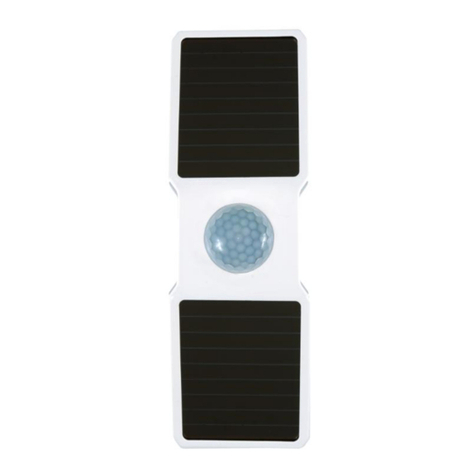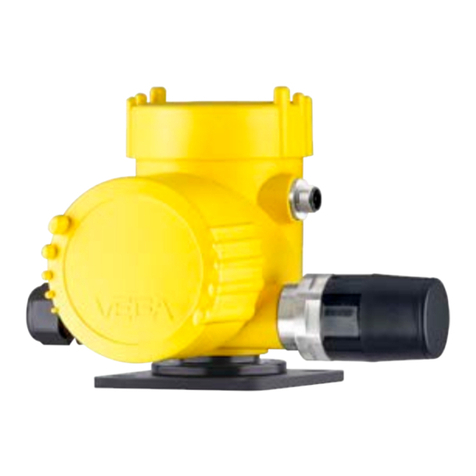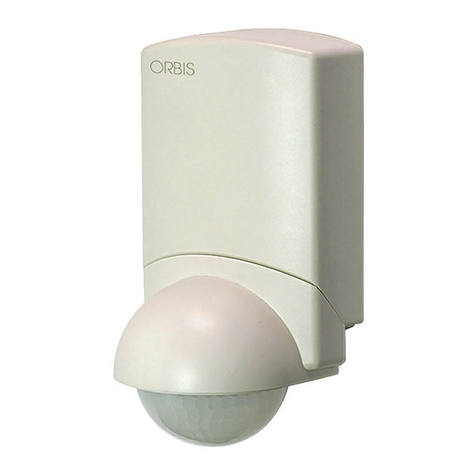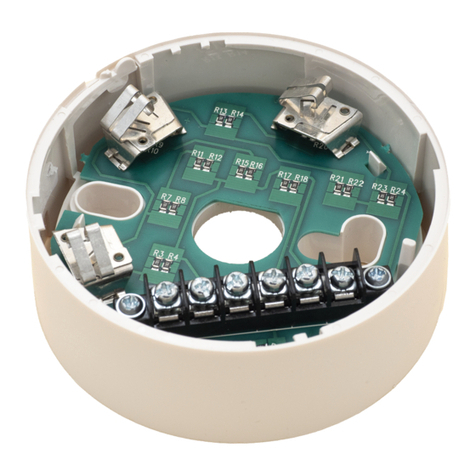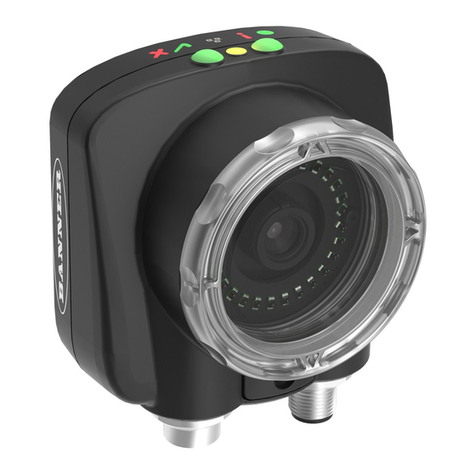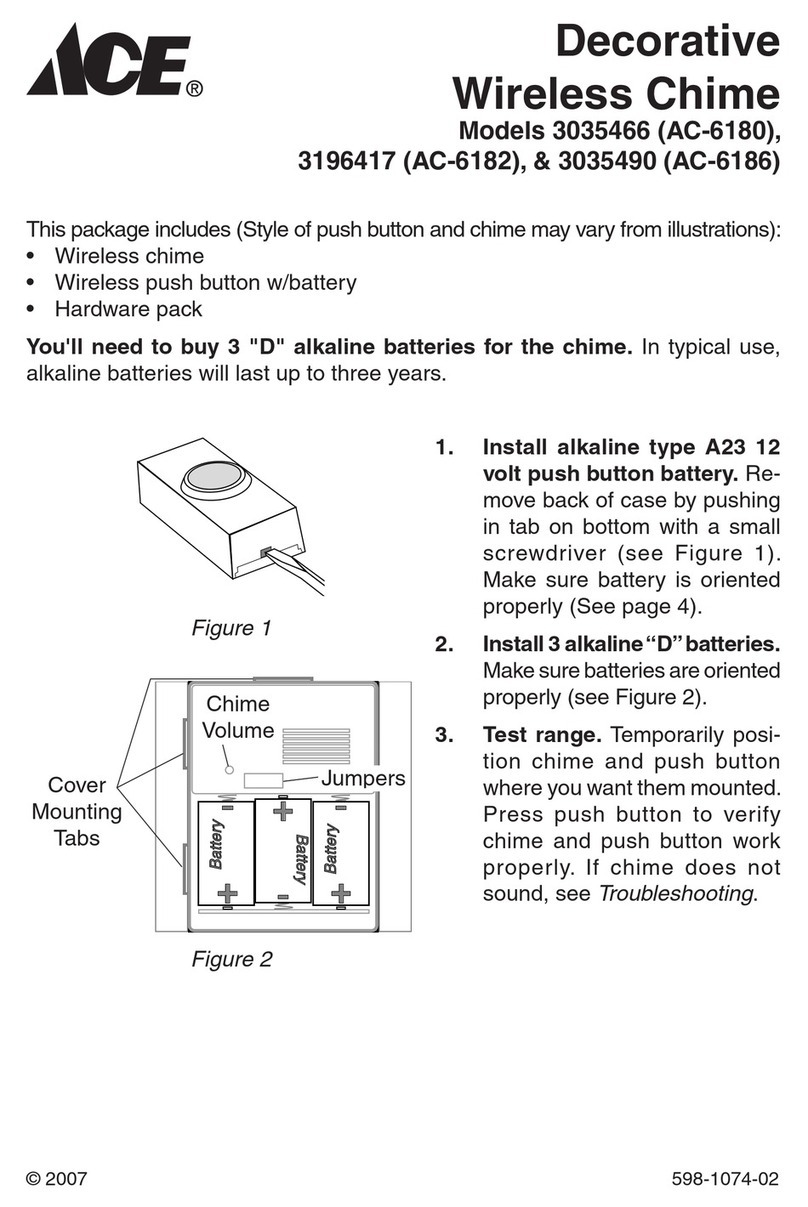aquilar AquiTron AT-G-ALERT User manual

AquiTron AT-G-ALERT
Refrigerant Sensor
QUICKSTART
GUIDE

AT-G-ALERT
Refrigerant Gas Sensor For Occupied Spaces
OVERVIEW
The AquiTron AT-G-ALERT detects refrigerant leaks in occupied spaces.
The detector is for indoor applications. It is housed in an ABS enclosure that ts into most 47mm depth 2-gang UK electrical back boxes
(not included). Thinner metal mounting tabs are provided for ush mounting in UK back boxes with higher mounting tabs.
LEAK DETECTION SOLUTIONS
1
Figure 1. AT-G-ALERT with examples of available fascia plates.
INSTALLATION SPECIFICATION
AT-G-ALERT
100 to 240 VAC, 50/60 Hz
POWER CONSUMPTION
4 watt
WIRING POWER
3-core cable, 14 to 20 AWG (0.5 to 2.0
mm2)
RELAYS
Number: Two
Type: SPDT
Rating: 1 A at 125 and 250Vac, resistive
load.
WIRING RELAYS
3-core cable, 18 to 20 AWG (0.5 to 1.0
mm2)
MODBUS
Connection: RS-485 terminal block
Baud rate: 9600 or 19200 (selectable)
Default baud: 9600
Start Bits: 1; Data Bits: 8
Parity: None (default), odd, even
(selectable)
Stop Bits: 1 (default) or 2 (selectable)
Retry Time; 500 ms (min) between retries
End of Msg; Silent 3.5 characters
WIRING MODBUS
2-core twisted, shielded pair 18 to 24 AWG
7 (0.2 to 1 mm2) with 120 Ω characteristic
impedance; Use Belden 8761 or similar;
Maximum diameter of cable + heat shrink
8 must be ≤5 mm (0.2 in)
The AT-G-Alert is designed for use
in 2- gang UK back boxes with a
minimum depth of 47 mm (1.9”).
Gas alarms and status messages are indicated visually by a 3-coloured LED and audibly by a buzzer. In case of an alarm and/or fault, relays
switch (for example, shut-o valves or alarm devices).
The refrigerant detector can be calibrated and maintained non-intrusively using a magnetic wand.
2
3
4
5
6
1
Figure 2. AT-G-ALERT components overview.
1. Magnetic wand
2. 3-colour status LED
3. Magnetic Switch 1 ( on top)
4. Magnetic Switch 2 ( on bottom)
5. Sensor Module
6. Plastic Mounting Tabs
MOUNTING CONSIDERATIONS
ENVIRONMENTAL CONSIDERATIONS: Carefully consider the
full range of environmental conditions to which the instruments
will be exposed.
TARGET GAS CONSIDERATIONS: The physical data of the gas or
vapour to be detected must be observed.
APPLICATION CONSIDERATIONS: The specics of the
application (for example, possible leaks, air movement/draft,
etc.) must be observed.
ACCESSIBILITY CONSIDERATIONS: The degree of
accessibility required for maintenance purposes must be
granted.
ELECTRONIC CONSIDERATIONS: The system contains
sensitive electronic components that can be easily
damaged. Do not touch or disturb any of these components.

2
Mount the AT-G-ALERT according to the above considerations, product dimensions, and maximum wiring lengths.
Figure 3. AT-G-ALERT Proper vs. Improper Placement.
10
SAFETY INSTRUCTIONS
CODE COMPLIANCE: Comply with all local and national laws, rules,
wiring codes, and regulations associated with this equipment.
TECHNICIAN USE ONLY: This unit must be installed by a suitably
qualied technician who will install this unit in accordance with
these instructions and the standards in his particular industry/
country. Operators of the unit should be aware of the regulations
and standards in their industry/country for the operation of
this unit. These notes are only intended as a guide and the
manufacturer bears no responsibility for the installation or
operation of this unit.
Failure to install and operate the unit in accordance with these
instructions and with industry guidelines may cause serious injury
including death and the manufacturer will not be held responsible
in this regard.
SAFE MOUNTING: This detector must be connected by a marked,
suitably located and easily reached switch or circuit-breaker as
means of disconnection.
Figure 4. Typical AT-G-ALERT Installation in an Occupied Space Application
CAUTION: DO NOT MOUNT the AT-
G-ALERT in an area that may contain
ammable liquids or vapours. Operation of
electrical equipment in such an area constitutes
a safety hazard.
CAUTION: Mounting in ceiling voids in a
hotel room would not strictly comply with
EN378.
CAUTION: RS-485 signal cable must be
insulated to the highest voltage level in
the system. Protect the RS-485 signal cable by
using the supplied installation kit.
IMPORTANT Mount at a height between
100 and 150 mm (4 and 6 inches) o
the oor. Avoid drafts and heat sources (like
radiators), and avoid sources of steam.

3
CONFIGURATION
PIN 1 - RESTART
O: Normal Operation (Default)
On: Restart AT-G-ALERT
PIN 2,3 - ALARM ON DELAY
O,O: No Delay (Default)
O,On: 5 miniute Delay
On,O: 10 miniute Delay
On,On: 15 miniute Delay
PIN 4 - FAILSAFE
O: Normal relay Operation (Default)
On: Failsafe relay operation
PIN 5 - RELAY 2 FAULT INDICATION
O: High alarm or fault (Default)
On: High alarm only
PIN 6 - ALARM LATCHING
O: Alarms automatically reset (Default)
On: Alarms latch and require manual
reset
PIN 7 - BUZZER DISABLE
O: Buzzer enabled (Default)
On: Buzzer Disabled
PIN 8 - ENABLE RESET TO
FACTORY DEFAULTS
O: Normal Operation (Default)
On: Reset enabled (see manual for
details)
Figure 5. Switches for Conguring the AT-G-Alert
INSTALLATION
Note: Before installing the AT-G-ALERT, refer to the
calibration gas concentration label and record the
value for use in step 16 of the calibration procedure.
When inserting the wire into the terminal, release the spring
clamp by pushing back the release latch.
Caution: Ensure all wiring connections are made
before applying power.
Push to release
Modbus
(See steps 1-6)
Figure 6. Wiring Power & Modbus
1. Prepare signal cable and put boot over the signal
cable (1).
2. Add ferules if required (2).
3. Apply 10 cm piece of shrink wrap as close to the
wire ends/ferules as possible while leaving some
free wire to allow connection to the detector (3).
4. Heat the shrink wrap (4).
5. Connect signal wires/ferules to the detector (5).
6. Slide rubber boot along the wire and shrink wrap
assembly and connect it to the detector (6).
Figure 7. Details for Connecting Modbus Communications Wiring
SHIELD WIRE WARNING: Connect the shield
of Modbus wires to the earth ground of the
central control system (e.g., chassis, ground bus bar,
etc.).
Figure 8. Wiring Relay 1 (Low Gas Alarm) and Relay 2 (High Gas Alarm or Fault)
GROUND: If a metal plate is used please
make sure that this plate is grounded to
earth.

3
4
6
7
3
5
4
6
8
8
8
4
Brushed Aluminium Eect
1
2
Figure 9. AT-G-ALERT Components
1. Example of a custom faceplate
2. Example of a UK back box
3. Mounting tabs
4. Direction arrows (x2) for proper
mounting.
5. Sensor type / calibration and ID/
serial number labels
6. Test point access holes (x2)
7. Replaceable sensor module
8. Sensor alignment ribs (x3)
Note: For UK back boxes with
“higher” mounting tabs, remove
the thick plastic mounting tabs from the
detector (using wire snips or nippers) and
screw on the thinner metal mounting tabs
(included) to ensure ush wall mounting
of the faceplate. Be sure to dry t the
plastic tabs before cutting them from
the detector to verify that they are too
thick for proper ush mounting of the
faceplate to the wall. Figure 10. AT-G-ALERT Retrot of Thinner Metal Mounting Tabs
OPERATION OVERVIEW

5
GENERAL CALIBRATION PROCEDURE
1. Verify that the detector is NOT in alarm and does not have a fault condition (i.e., it
must not have a continuous orange LED).
2. Verify that the calibration gas is in a balance of air, not Nitrogen (N2).
3. Fit testing hood to the fascia plate (7) or base plate (6) (see below).
4. Ensure switch 8 is OFF . The buzzer will be OFF and the LED will be OFF.
5. Connect the tubing to the barbed ttings of the pressure regulator and testing
hood.
6. Verify that gas ow is approximately 0.3 to 1.0 L/min.
7. If operation is intended to be at higher altitudes, the factory calibration will result
in a reading lower than the reading at sea level (reduced partial pressure). A
new span adjustment is recommended if the altitude or the ambient pressure is
changed. The factory calibration is set to sea level.
8. Always perform a zero adjustment before a span adjustment.
4
12
3
5
1. Flow meter
2. Pressure regulator
3. Calibration gas
4. Tubing
5. Testing hood (UK
version)
Warning: Ambient air can be used to zero the sensor instead of synthetic
air only if the area is known to be free of the target gas or any gas to which
the sensor may be cross- sensitive. In this case, no cylinder or testing hood is
needed for the zero adjustment.
Figure 11. Details for Connecting Modbus
Communications Wiring
Zero Adjustment ( ... continued for General Procedure)
9. Tap and hold ( • ) for more than 5 seconds. The LED will blink green-green-red to indicate the detector is ready. Verify that the
calibration gas is in a balance of air, not Nitrogen (N2).
10. Apply synthetic air (or use ambient air per the warning above).Set switch 8 to OFF. The buzzer will be OFF and the LED will be OFF.
11. Tap ( • ) within 30 seconds to conrm start of calibration. Otherwise the detector will time-out and return to normal operation.
12. As the process progresses, the LED will blink green-red, green-red-red, green-red-red-red, etc.
• To abort calibration, tap and hold ( • ) for >5 seconds, turn o gas ow and remove the testing hood. The detector will return to
normal operation.
• If calibration is successful (green LED), skip to step 15.
• If calibration is unsuccessful (orange LED blinks @ 2 Hz), then tap ( •) to discard the
13. Turn o gas ow from synthetic air
14. Replace synthetic air tank with calibration gas tank in preparation for span adjustment.
Span Adjustment
15. Tap and hold ( • • ) for >5 seconds. The LED will blink green-green-orange when the detector is ready.
16. Apply span gas in the concentration listed on the cal gas concentration label (beneath the detector’s cover plate). This may require the
temporary removal of the bezel and cover plate to see the label.
17. Tap ( • • ) within 30 seconds to conrm initiation of the calibration. Otherwise the detector will time-out and return to normal
operation.Turn o gas ow from synthetic air
18. As the calibration process progresses, the LED will blink green-orange, green-orange-orange, green-orange-orange-orange, etc.
• To abort calibration, tap and hold ( • • ) for >5 seconds, turn o gas ow and remove the testing hood. The detector will return to
normal operation.
• If calibration is successful, the LED will blink green-orange-red indicating ‘oine’. Turn o gas ow and remove the testing hood.
After 6 minutes the detector will return to normal operation.
• If calibration is unsuccessful (orange LED blinks @ 2 Hz), then tap ( • • ) to discard the calibration attempt, and see Section 5.3 on
page 21 on the user manual for troubleshooting. Turn o gas ow and remove the testing hood. After 6 minutes the detector will
return to normal operation.
Bump Test
1. Inform building personnel of test so that certain alarms may be inhibited (e.g. shutdown valves, notication of authorities, etc.).
2. Connect adapter and target gas according to instructions in General calibration procedure
3. Apply a suciently high concentration of target gas to trigger alarms, but not pure refrigerant or hydrocarbons (e.g., do not use a
butane lighter), as this might damage the sensor.
4. Once the alarm thresholds are exceeded, all designated gas alarm relays will be activated and the digital outputs will transmit the
corresponding gas concentrations.
5. Turn o gas ow and remove testing hood.

6
Important: All information, including illustrations, is believed to be reliable. Users, however, should independently evaluate the suitability
of each product for their application. Aquilar Limited makes no warranty as to the accuracy or completeness of the information, and
disclaims any liability regarding its use. The only obligations of Aquilar Limited are those in the Aquilar Standard Terms and Conditions of
Sale for this product, and in no case will Aquilar Limited be liable for any incidental, indirect, or consequential damages arising from the
sale, resale, use or misuse of the product. Specications are subject to change without notice. In addition, Aquilar Limited reserves the
right to make changes – without notication to Buyer
– to processing or materials that do not aect compliance with any applicable specication.
AquiTron is a trademark of AquiTron Limited
Aquilar is a trademark of Aquilar Limited
Unit 30, Lawson Hunt Industrial Park,
Broadbridge Heath, Horsham, West Sussex,
RH12 3JR
+44 (0) 1403 216100
www.aquilar.co.uk
V1 07.2020
Other manuals for AquiTron AT-G-ALERT
1
Table of contents
Other aquilar Accessories manuals
Popular Accessories manuals by other brands
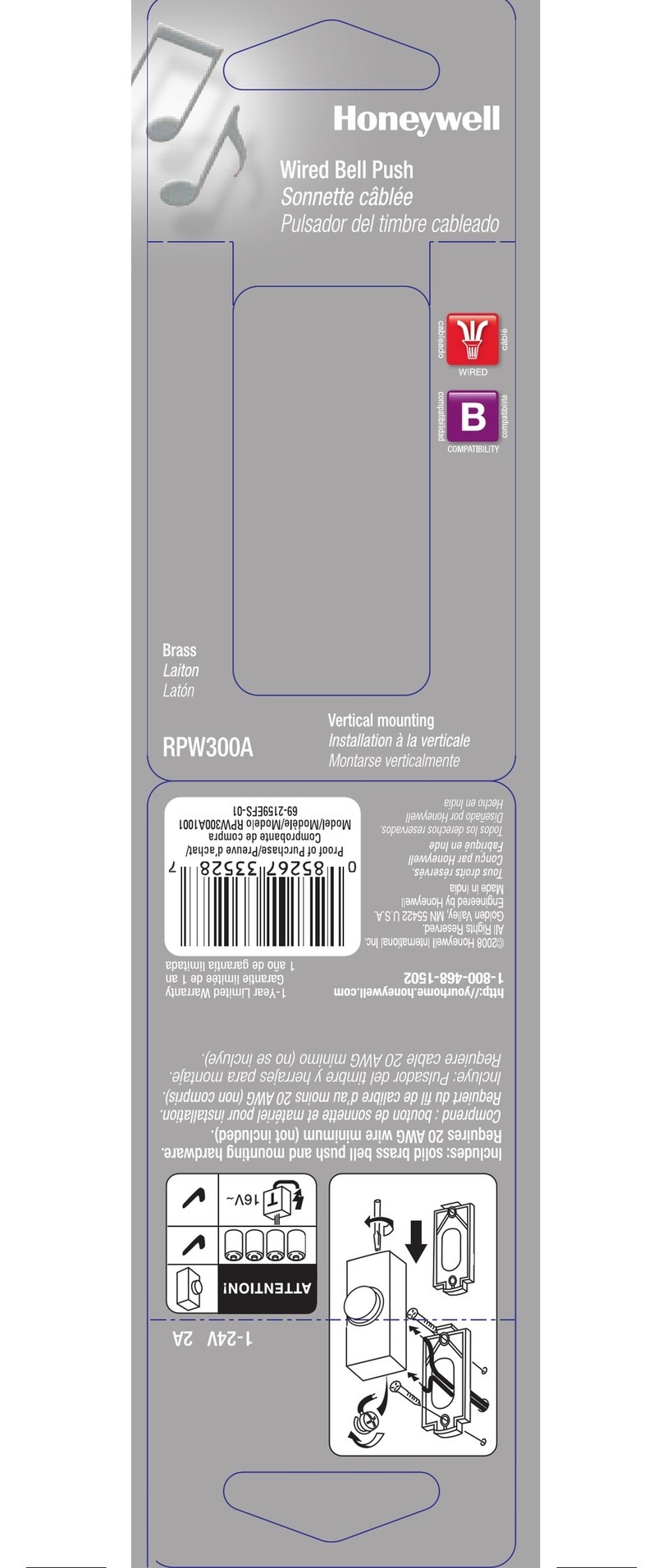
Honeywell
Honeywell RPW300 Mounting instruction
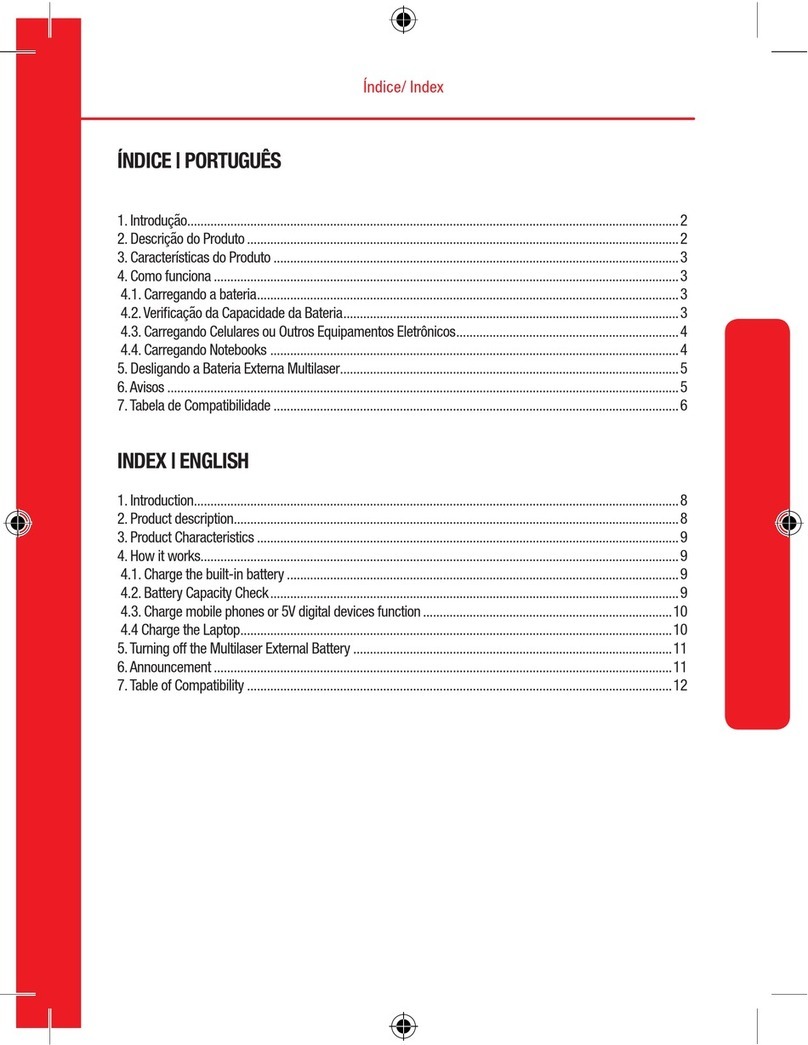
Multilaser
Multilaser CB066 user manual
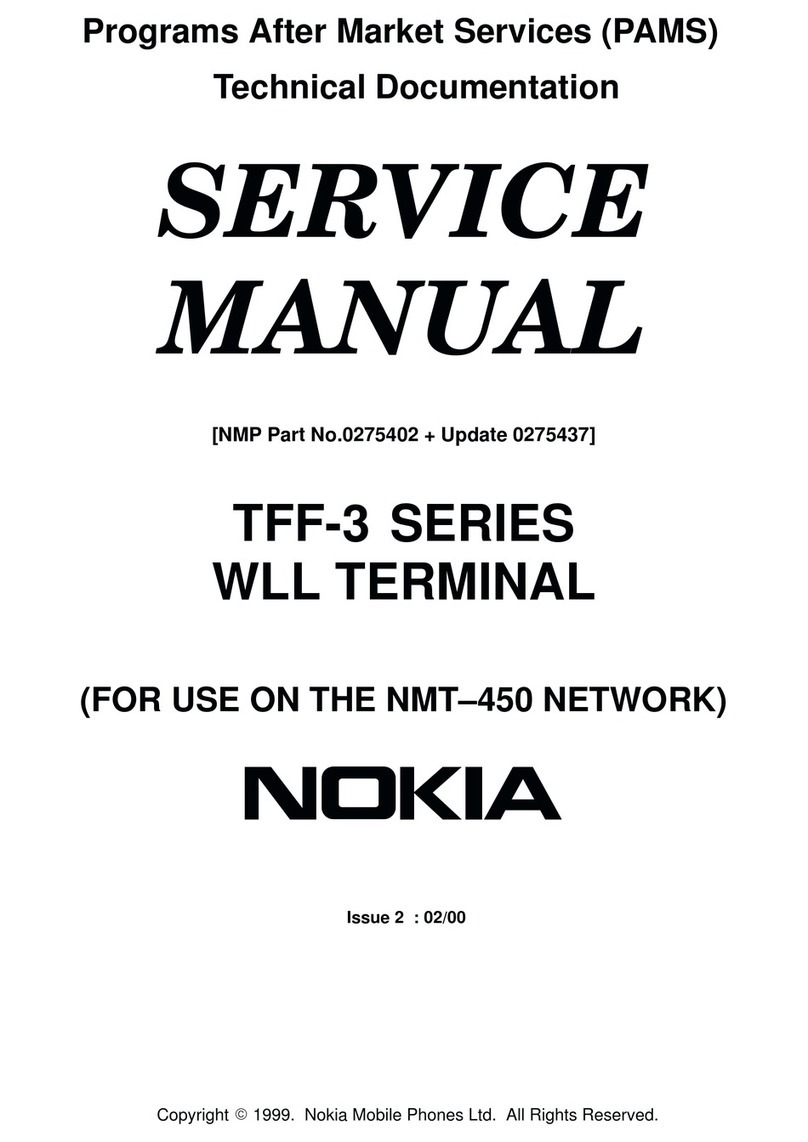
Nokia
Nokia TFF-3 Series Service manual
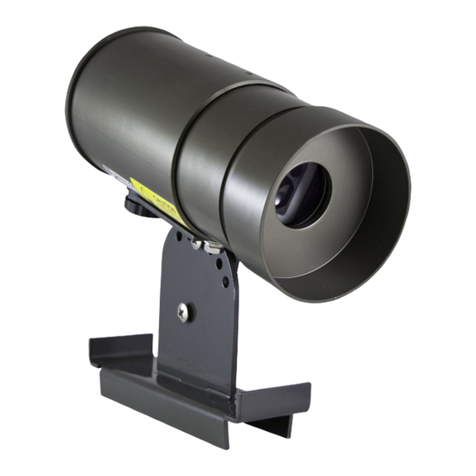
Campbell
Campbell SDMS40 instruction manual
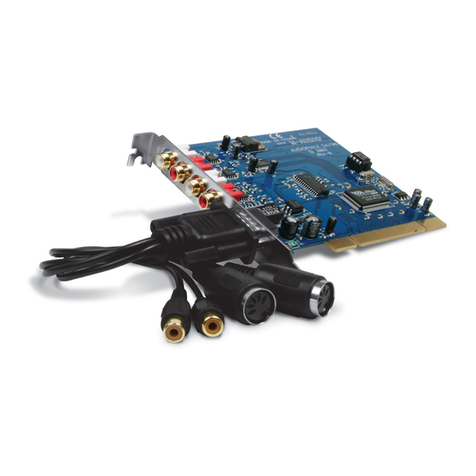
M-Audio
M-Audio PCI Audio & MIDI Interface Audiophile 2496 Bedienungsanleitung
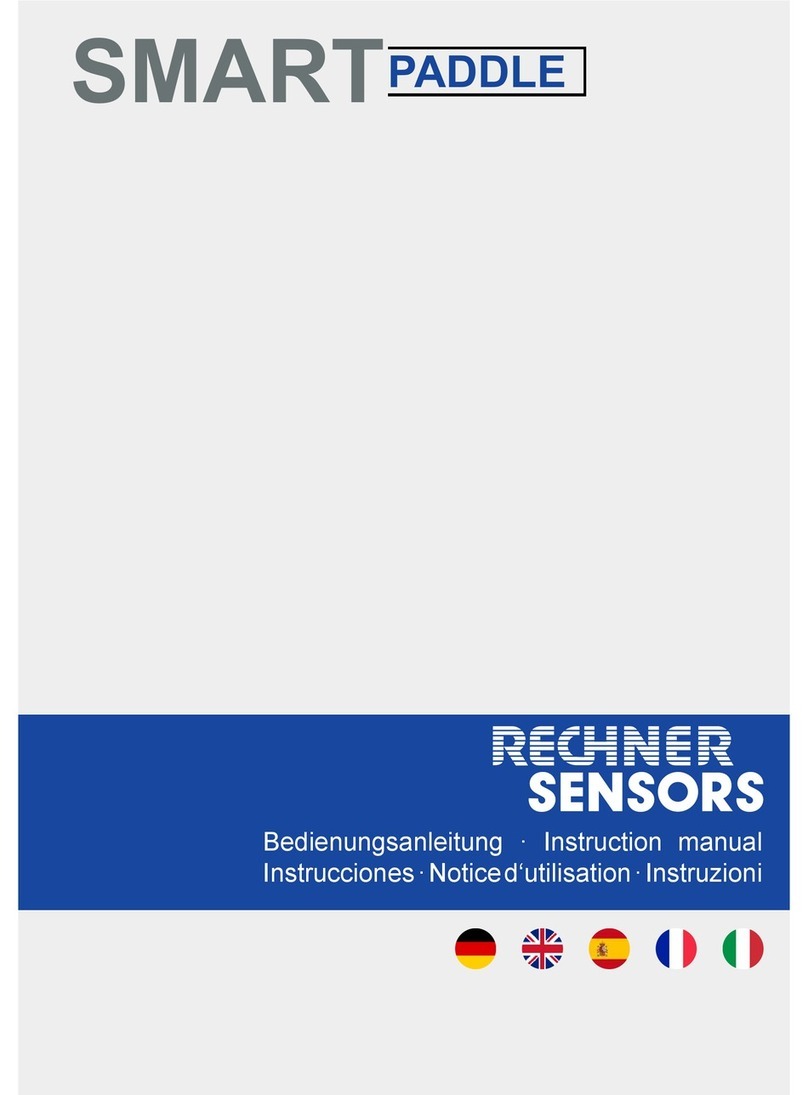
Rechner Sensors
Rechner Sensors SMART Paddle instruction manual
